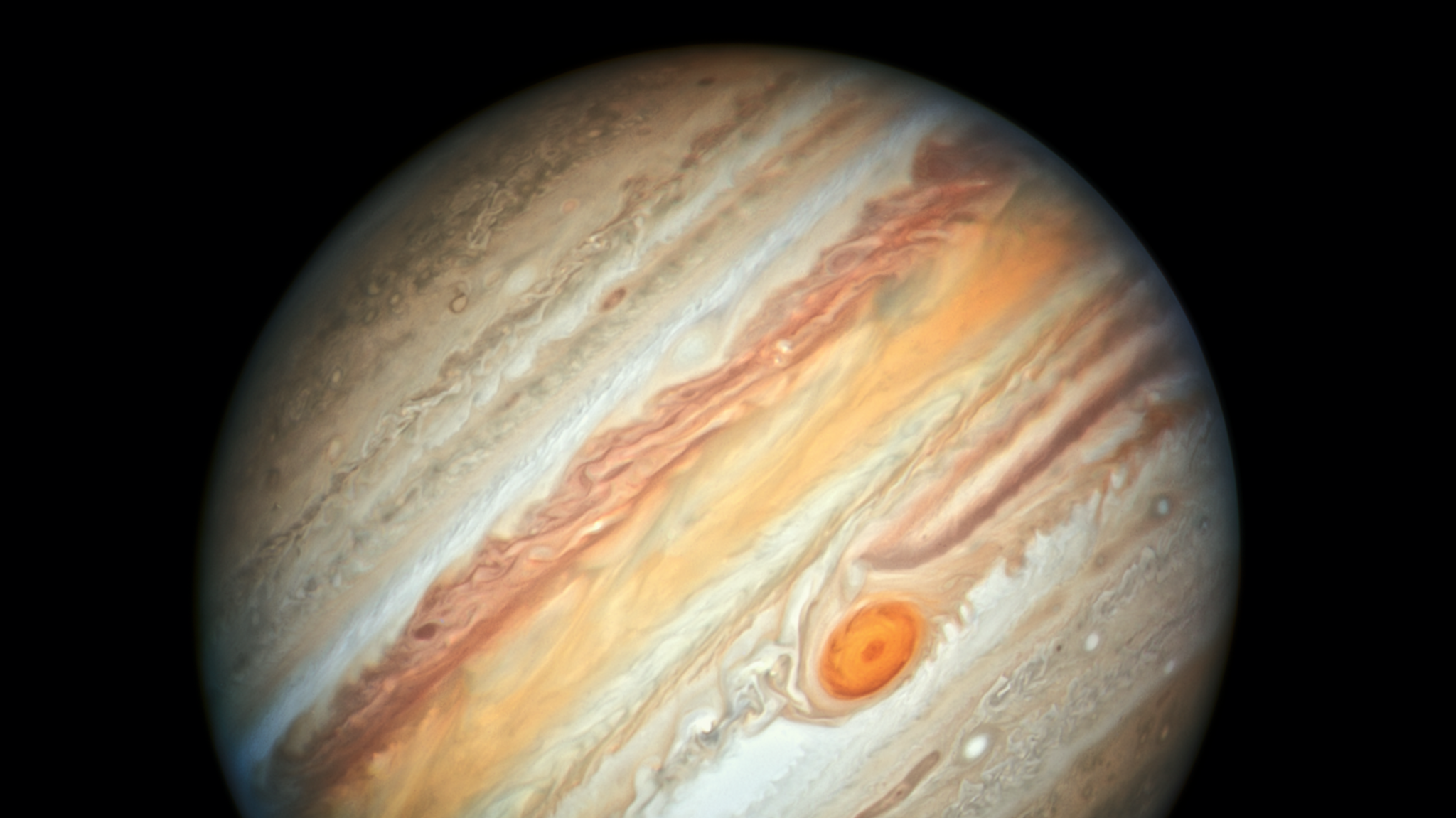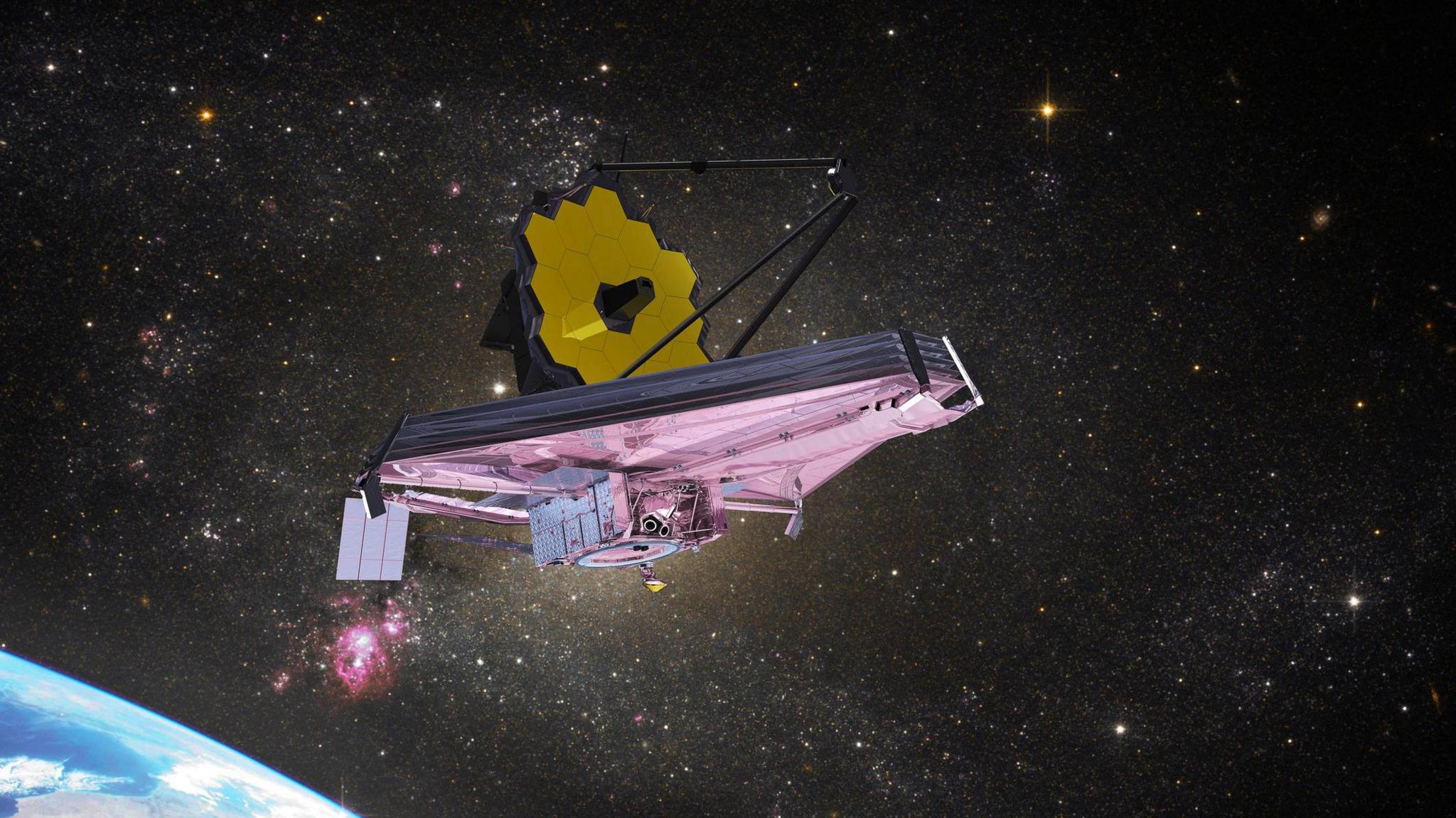'Super-Jupiter': Giant gas planet discovered by space telescope

The image, released by the James Webb Space Telescope, shows a yellow and orange circle in the bottom left corner, which is the newly discovered gas giant Eps Ind Ab. The star icon in the centre marks the location of the triple star system it is in
- Published
The James Webb Space Telescope has discovered a new planet in a triple star system only 12 light-years away from Earth.
The exoplanet - which means any planet beyond our solar system - is called Epsilon Indi Ab, or Eps Ind Ab for short.
It lives up to its status as a gas giant, with a mass more than six times the size of Jupiter, which is the biggest planet in our solar system.
The discovery of Eps Ind Ab is the first time that a planet has been 'imaged' (photographed) directly from space, without being spotted from a telescope on Earth first.
More space stories:
Apollo 11: 55 years since humans first walked on the Moon
- Published16 July 2024
Scientists discover giant 'super fluffy' candy floss-like planet
- Published17 May 2024
Most kids believe they'll travel to space - do you?
- Published6 June 2024
What is a gas giant?

Jupiter is one of our solar system's gas giants - and Eps Ind Ab is even bigger
Gas giants, like Jupiter, Saturn and Eps Ind Ab, are large planets that don't have a hard crust of solid ground like the Earth has.
Instead, they're made of mostly helium gas, hydrogen gas, or both, which swirls around a solid core.
So, even if we were able to travel to Eps Ind Ab in the future, we wouldn't be able to land a spacecraft on it.

The James Webb Space Telescope is 1.5 million kilometres away from Earth, and helps scientists take photos of space that they wouldn't be able to with telescopes on the ground
What do we know about Eps Ind Ab?
There was a surprise when scientists discovered Eps Ind Ab, as it was in a different location than they first thought.
It's a very bright and cold planet, with an estimated temperature of 2 Celsius - much colder than the other gas exoplanets the James Webb Space Telescope has studied so far.
A year on Earth is how long it takes for our planet to orbit the Sun. As it takes 200 Earth years for Eps Ind Ab to orbit its star, a year would be much, much longer on the exoplanet.
Findings are still at an early stage, but scientists hope that by learning more about Eps Ind Ab can help them understand how gas planets form and change over time.
